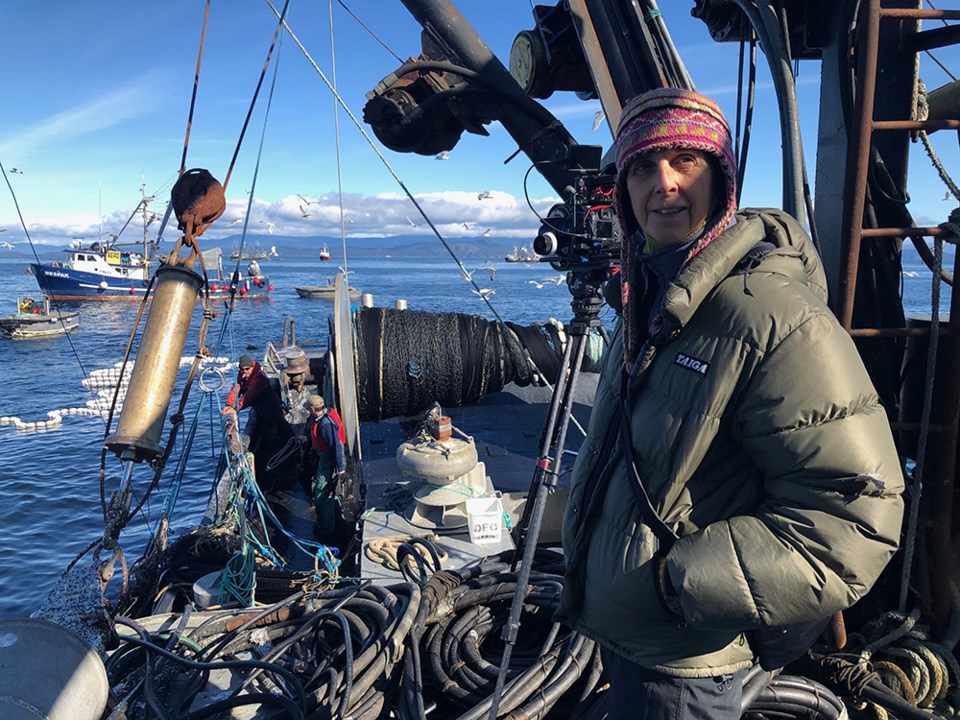If you have not yet seen Nettie Wild and Scott Smith’s show, Go Fish, at qathet Art Centre [“Art centre to host work of well-known documentarians,” September 7], try and catch it before its final showing on October 7.
The triptych of footage is only 15 minutes long, but its impact might keep you awake all night. You may be brought to tears, as I was, with their artful portrayal of the spectacular natural beauty that surrounds us; that beauty we sometimes don’t try hard enough to protect.
The show captures the annual herring spawn in and around Lambert Channel from land, sea, sky and underwater. Predators that arrive to devour the herring include industrial fishing boats with vast nets reeling in and vacuuming up many millions of herring. You will not be bored.
Viewers might wonder if this extraordinary show is art for art’s sake or if there is a message. It certainly arouses curiosity about herring, and a little fact sheet on herring to read after viewing the show would help to educate the public about a very crucial issue.
Without any context, however, the show is in danger of leaving viewers with the impression that there is an abundance of herring in local waters. This could not be further from the truth; herring on the BC coast have been mismanaged and overfished for more than a century and are on the verge of collapse.
Up until the 1920s, herring were so abundant that they seemed inexhaustible. Indigenous elders told stories of wading thigh-high through herring at spawning time.
In Indigenous communities up and down the strait, herring and their roe were a mainstay food source. Here in Tla’amin territory, herring were arguably more important than salmon. No more.
The herring stock you see in Go Fish spawns in and around Lambert Channel between Denman and Hornby islands and is the last commercially viable herring fishery on the BC coast (there used to be five). And it is barely hanging on to that status.
Viewers of Go Fish might wonder about the destiny of all these herring being scooped up by fishing vessels. Most are going to feed open-net farm fish whose lice and viruses are a threat to wild salmon. Some will become pet food, and their roe will be sold to Japan.
Herring are a foundational species at the bottom of a food chain that feeds more than 40 species of fish, birds and mammals, including salmon and whales. When they go, other species will go, too.
The herring fishery needs to be closed to non-Indigenous fishers for as long as it takes populations to replenish themselves and the aquatic food chain they support. Let’s not let Go Fish become a requiem for a once glorious expression of life and abundance on this coast.
Mary Jane MacKay lives on Denman Island.
Join the Peak's email list for the top headlines right in your inbox Monday to Friday.




